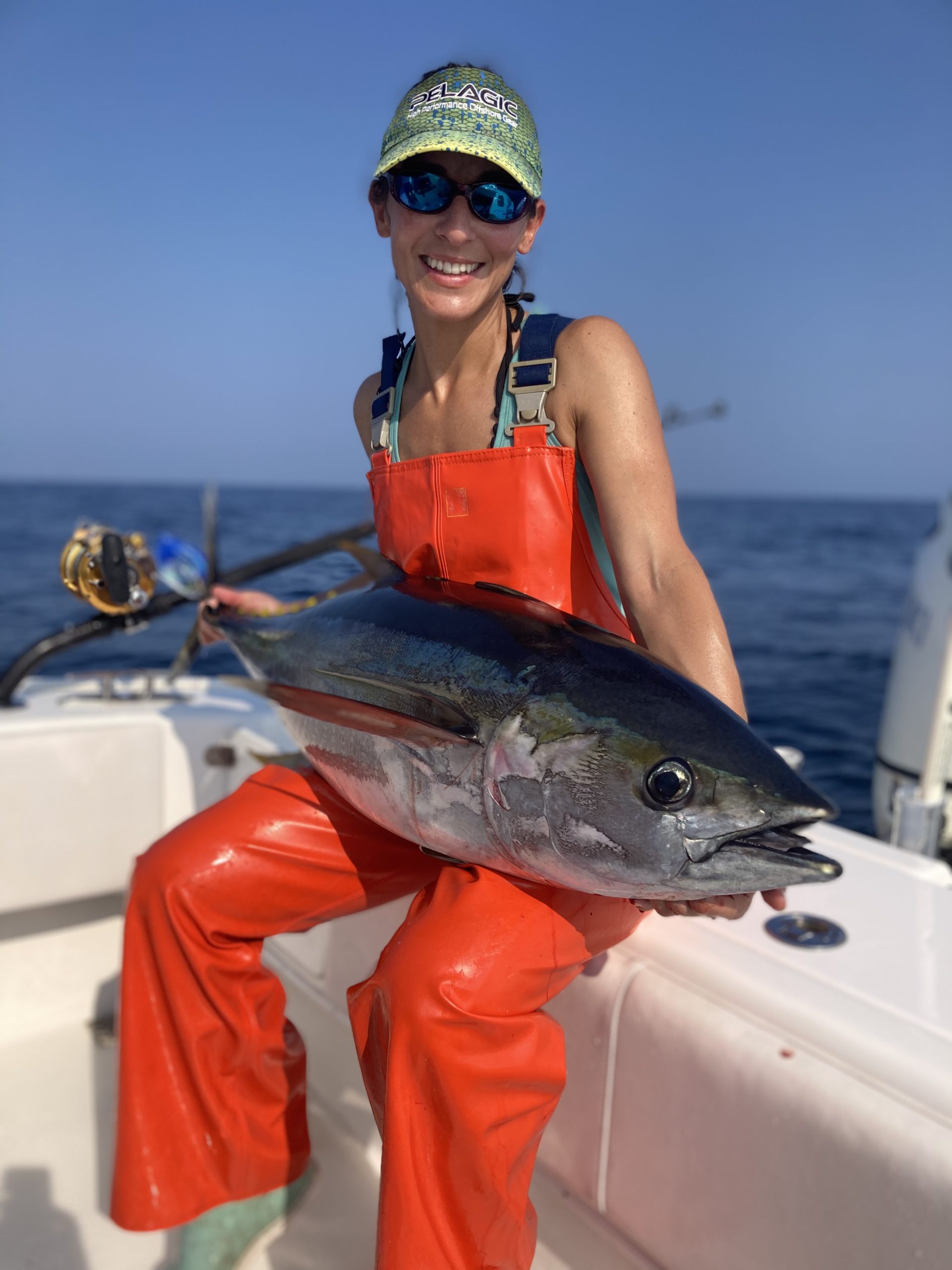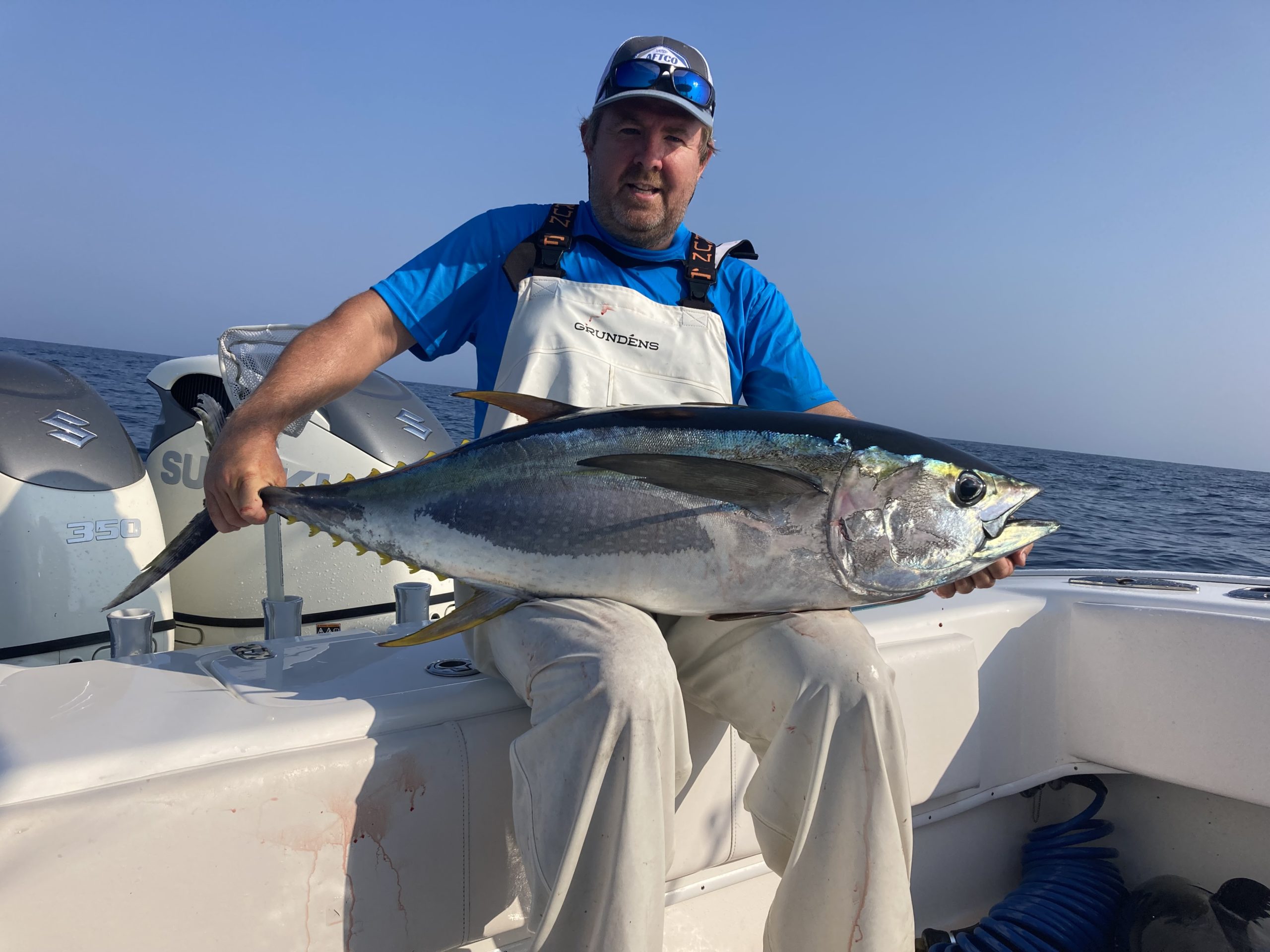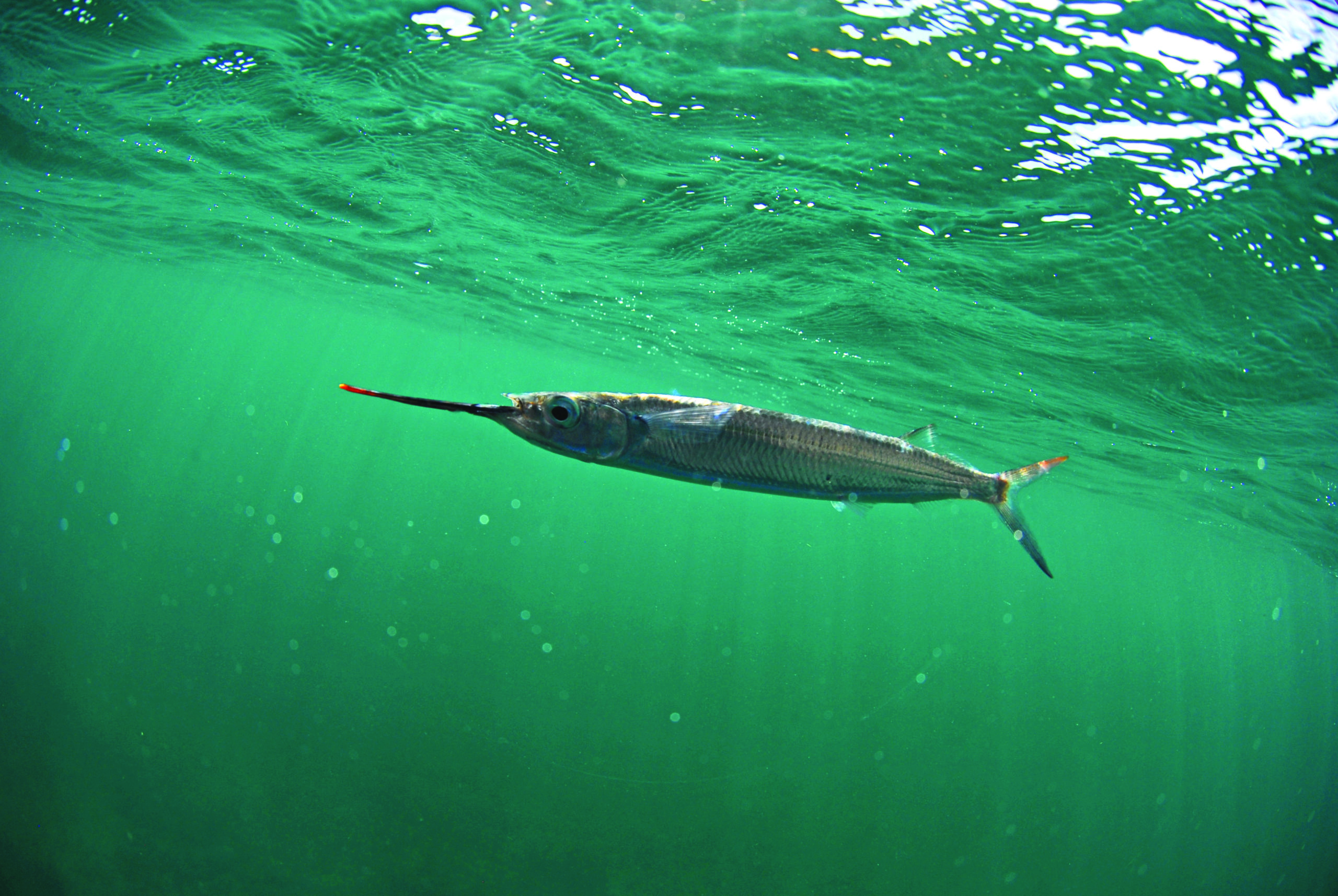Spread layouts for targeting yellowfin and bluefin tuna.

Fifteen years ago, when my wife Gina and I bought our first boat; we never would have guessed that we would catch the number of tuna we have. By no means am I declaring myself the world’s greatest tuna fisherman, but I am really proud of the progress we’ve made. Going from a 25-foot single-engine boat to a 31-foot twin certainly helped.
Research has been a big part, reading articles, watching videos and attending seminars, they all played a role. However, the true driver of our success is the time we have put in on the water. I’m sure most people have heard the saying “practice makes perfect.” Back in the day, the learning curve was steep. Even today, I continue to learn. To practice, you need to get out on the water frequently.
BLUE VS. YELLOW
Most of my fishing takes place on the mid-shore tuna grounds. That means I’m usually fishing 20 to 65 nautical miles out. Yellowfin tuna generally will show up inshore around late June or early July. However, bluefin tuna will start to show up in mid to late May. Last year was the earliest (May 18) that I had ever caught a bluefin. It may surprise you that my yellowfin tuna spread is different from my bluefin tuna spread.
Bluefin Spread: Let’s talk about my bluefin spread first. When it comes to bluefin, I run three lures with “meat.” That usually means three Joe Shute (5-ounce keel weighted) lures with ballyhoo. Before we go any further, let’s talk ballyhoo real quick. I have become very picky through trial and error when choosing which ballyhoo to buy. I use Baitmaster “select” ballyhoo. These baits come five per pack and are 9 to 10 inches long. Hopefully, your local tackle shop carries them. If they don’t, see if they will order them for you. The ballyhoo’s are fished far back. Off each of the long riggers, they are fished 100 yards back, and from the rod in the rocket launcher up top, down the center, it’s fished 200 yards back. All of my trolling rods have 100 yards of top-shot except the one I run down the middle from the rocket launcher. That one has 200-yards of top-shot. Setting up my reels this way allows me to quickly know how far back my lures are running. Keep in mind if you are going to fish a rod way back, make sure you aren’t in a tight fleet of boats. I can guarantee you will not be happy when someone runs over that way back line.
Along with the three Shute/ballyhoo combos, I also run four Sterling Tackle chaos tracker bars with two on each side. Two out of the four bars will have purple in them. The other two will consist of a pink/white combo and green/zucchini combo. I don’t run any of my wide tracker bars from the outriggers. I run them right from the rod holders in the gunnel. Based on the size and experience of my crew, I may opt to add two more rods off the stern. Those will usually consist of a Sterling crazy eight daisy chain and a cedar plug. Even my trolling speed is different when fishing for bluefin compared to yellowfin. I usually settle in around 5 to 5-1/2 knots for bluefin and 6 to 7-1/2 knots for yellowfin.
Yellowfin Spread: When it comes to yellowfin, my spread is daisy chain-dependent. I run the same Joe Shute/ballyhoo combo down the middle. I shorten the length in half to about 100 yards. If it wasn’t for mahi-mahi, marlin and wahoo being around when I target yellowfin, I wouldn’t fish ballyhoo at all. Keep in mind this is based on my experience. I simply haven’t had much luck trolling ballyhoo for yellowfin tuna. Instead of four Sterling wide trackers, I only fish two with one on each side. I fish four daisy chains off the outriggers—two from each outrigger (long and short). I fish another daisy chain in the stern and a deep diving plug. My yellowfin spread colors are primarily green, rainbow, and zucchini with a bit of white and pink.

Maybe you just read my article and disagreed with everything I said. I hasten to remind you that this is what has worked for me in the past. Other captains have had great success employing completely different methods. That’s the great thing about fishing. There are so many ways to accomplish the same goal. Don’t be afraid to try something different. In the end, whether you’d like to use my techniques or go with a hybrid approach of using some of what I have to offer and combining your techniques, have at it. The one thing I hope you don’t disagree with me on is getting on the water more and staying safe on the water.
Stay Safe With XM
I’m sure you’re aware of XM Satellite Radio. You may not realize there is a product from XM that gives you real-time weather reports, whether you are inshore or offshore. To get this capability, you need a receiver and an antenna. I run Raymarine, so my receiver (SR200) and antenna (SRA50) can be bought for roughly $400. Garmin and Simrad can also run XM weather. I subscribe to the offshore plan. It’s $59 a month and yes, you can put the subscription on hold during the offseason.
I’m always looking for fronts, because fronts are typically accompanied by a line of strong thunderstorms and I stay on land. Even without a front, it seems that they call for a 30 percent chance of pop up/scattered thunderstorms just about every day during the summer, that used to be enough to keep me home. But XM changed that. The greatest features of having XM weather are the real-time lightning strikes and storm direction indicators that show how the storm is moving.
Last year there was an excellent yellowfin tuna bite at an area known as the Atlantic Princess. I was heading there in the wee hours of the morning along with 100 other boats (I wish I were kidding). About 10 miles south of Fire Island Inlet, the sky began to light up. Not from the sun coming up but what looked like cloud-to-water lightning strikes. Our quiet ride out was now filled with people panicking on the radio. I pulled up my XM weather and I tried to calm the fleet. I could see that the lightning was already southeast of the Atlantic Princess and that the arrows showed that it would keep moving southeast. I know several guys that turned around. I guess they couldn’t hear me. They missed out on a crazy bite in sunny calm seas.
Please don’t take this the wrong way; but if you can afford to go offshore to chase tuna, you can afford to make yourself and your crew safer by adding XM weather to your boat. Plus, wouldn’t it be nice to fish more?



